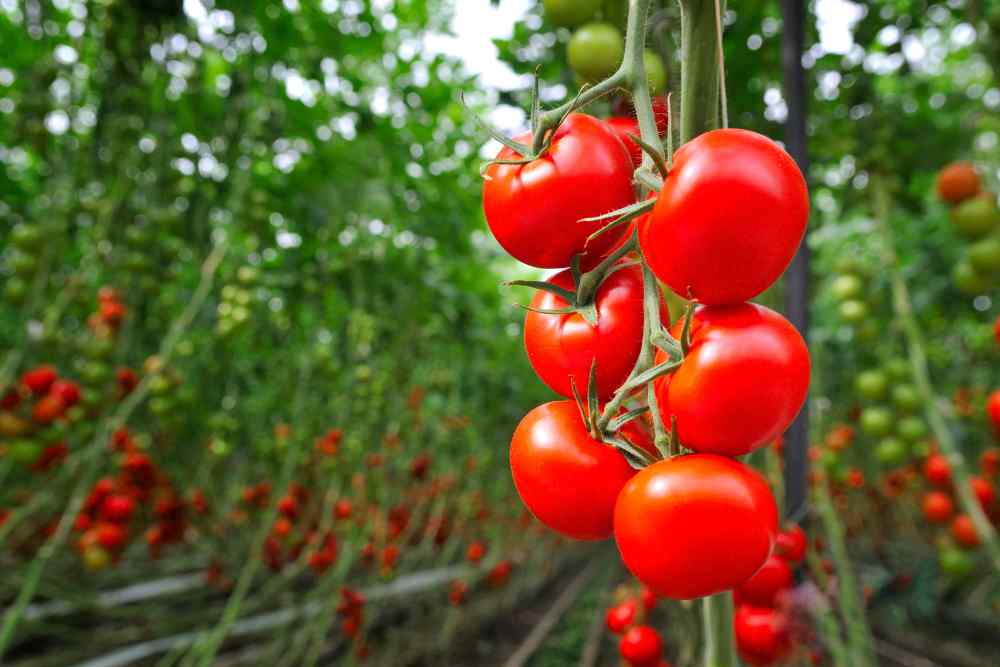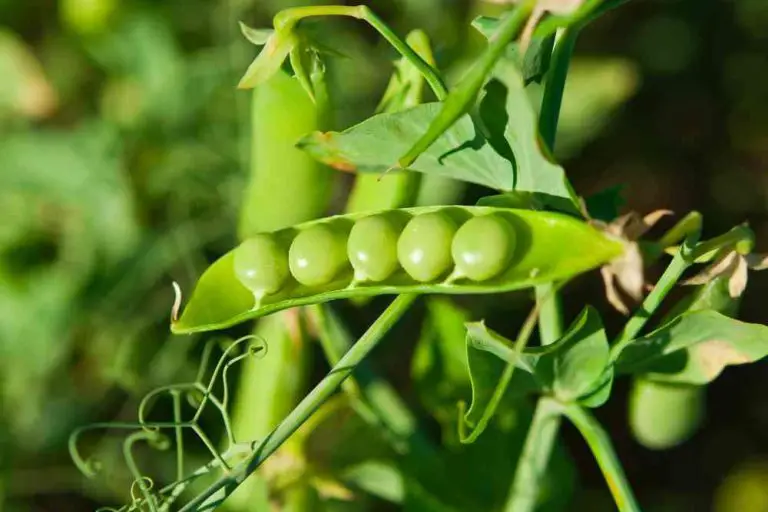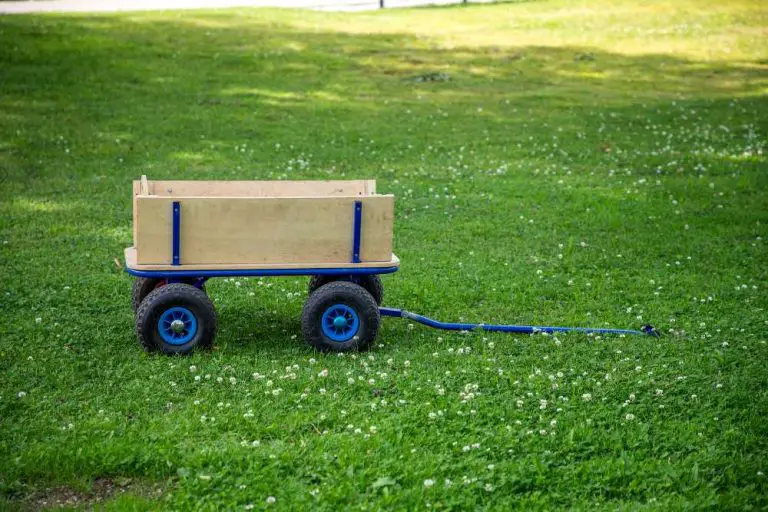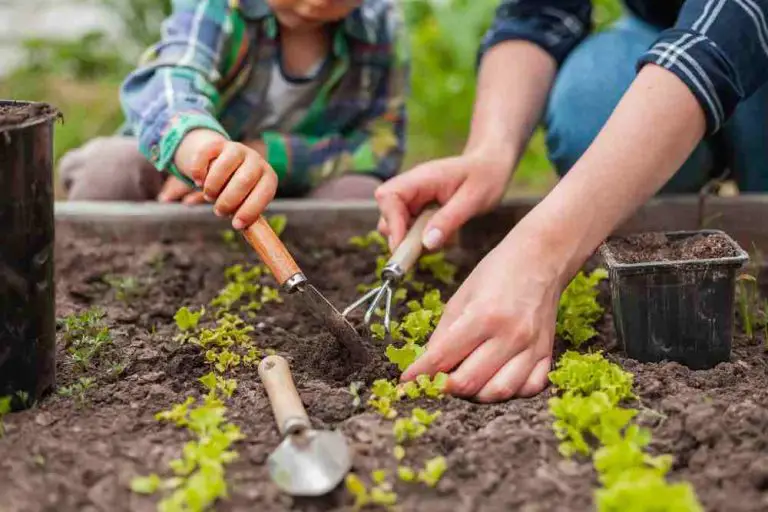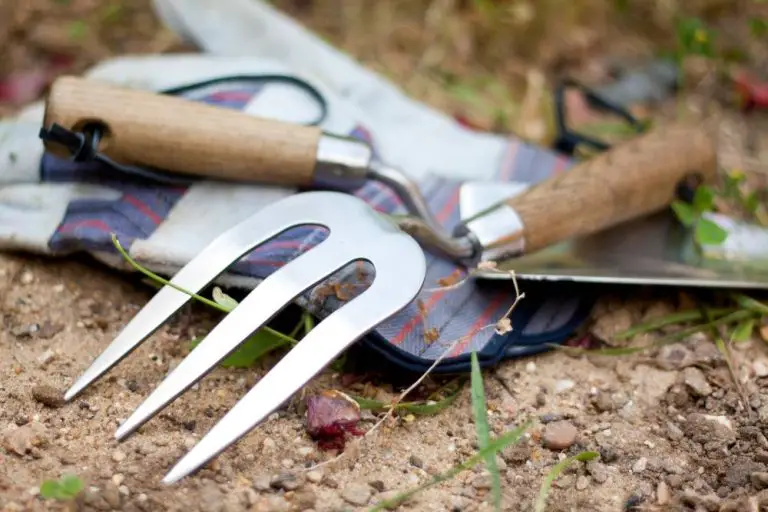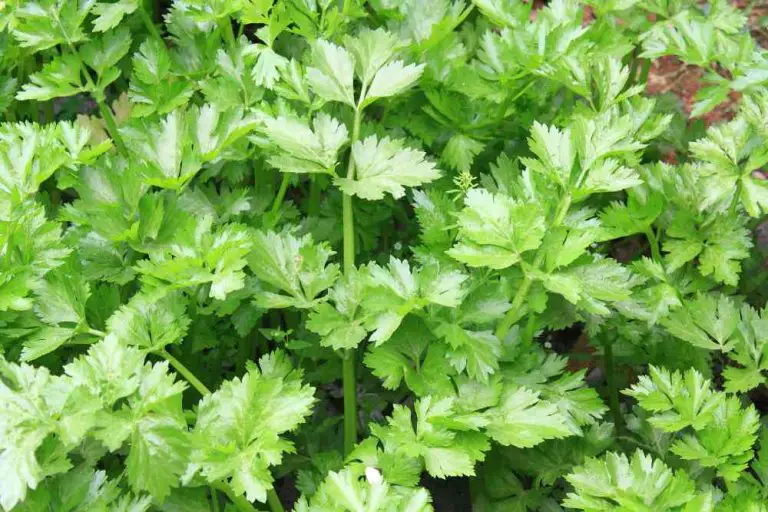Unveiling the Wonders of Florida Everglades Tomato: A Year-Round Delight for Gardeners
The Florida Everglades tomato, Solanum pimpinellifolium, is the closest wild relative and ancestor of our domesticated tomatoes, Solanum lycopersicum.
The currant tomato, often called the Everglades tomato, is ideally suited to South Florida’s scorching summers. In about 30 – 60 days, a plant will start to develop fruit the size of a dime. This cherry-type heritage tomato has a delicious, authentic tomato flavor. It works well in hot, humid areas. They form groups of eight and reach a half-inch (1 cent) in size. These supposedly grow naturally in the Florida Everglades.
It is referred described as a “wild tomato” by local gardeners. Some have claimed that it is a local species, but it is more likely that it “escaped” into the Everglades and adapted to its surroundings. The ‘Everglades’ wild tomato is perfect for gardens in South Florida. While most tomatoes require chilly nighttime temperatures to set fruit, it produces fruit throughout the year.
Growing Information
Growing Everglades tomatoes in full sun are recommended throughout the spring growing season. Sun Exposure should be changed to partial morning sun when spring reaches summer. From the end of April until the beginning of May, start shifting your Everglades tomato plants to some morning sun.
Water your plants frequently, especially right after planting. Vegetables may be grown in Containers: Although the Everglades Tomato will prosper in a conventional ground garden, tomatoes may also grow exceptionally well in containers (pots, Earth Boxes, etc.) Make sure your container has holes in the bottom to provide proper drainage if you decide to grow them in a container. Any potting soil will work for the container’s soil.
Plant seeds in a small pot or seedling tray 1/4 inch deep in wet potting mix. Until germination, keep cells moist in partial shade; after that, you can move them to full light exposure. The germination of seeds takes 5–10 days. The soft-sided seeds will decay before germinating if your pots or seedling trays are excessively damp.

Everglades cherry tomatoes grow best in full sunlight because it provides the plant with the energy it needs for photosynthesis and helps fight off the fungus brought on by humidity and wet, shaded surroundings.
We advise planting Everglades tomatoes as a groundcover (imagine the growth pattern of a pumpkin or a sweet potato) rather than attempting to manage and trellis them due to their big size and expanding growth habits.
Plant your seedlings deeper in the ground than they were in the pot because adventitious roots will form along the buried stem, increasing the overall root mass and resulting in a healthier plant. Maintain frequent irrigation and keep the soil moist to minimize fruit breakage.
Make sure to draw the mulch away from the plant’s stem when adding mulch to the bed or container because it will also assist in moderating soil temperature and keep the area clear of weeds. To reduce stress on your plants, make sure to search for little creatures frequently.
Transplanting
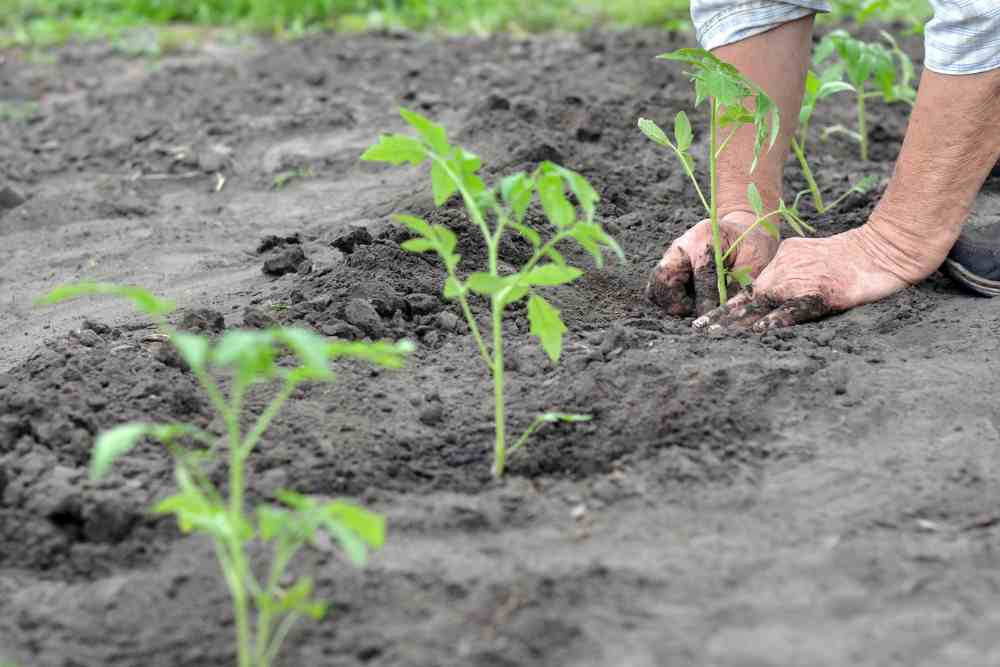
They are ready to be planted in the ground or a pot five weeks following germination. Plant them very deeply, only leaving a few inches of the plant above ground, to allow the stem to grow more roots. If it is impossible to dig deeply, seedlings can be placed sideways in the ground. If you grow your seeds in a container, add soil to the area around your tomato’s stem.
Harvesting
Harvest fruits 30-60 days after planting.
1. Powdery Mildew
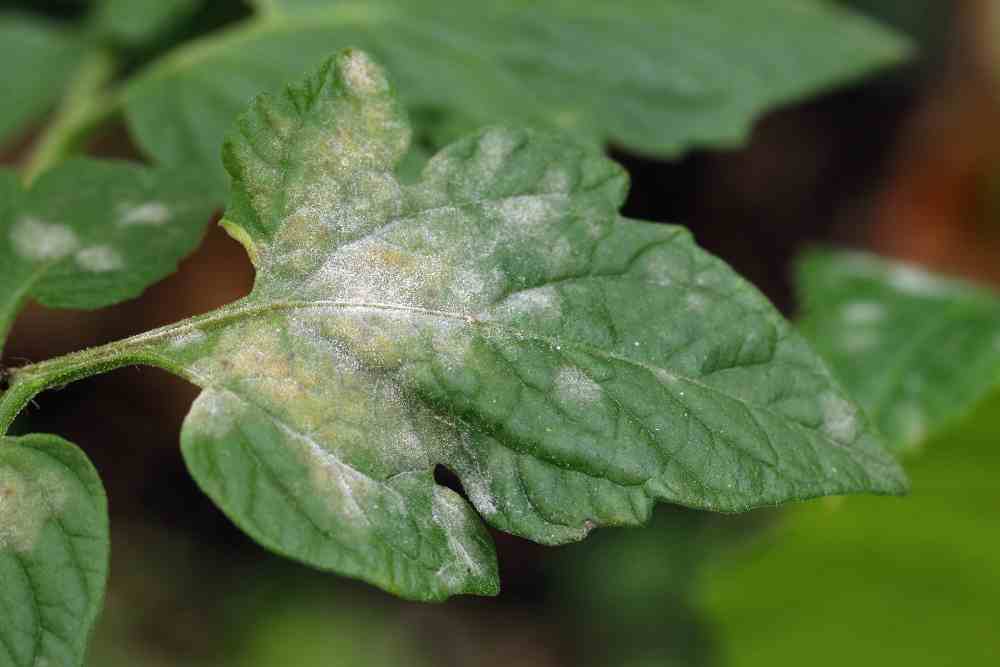
Signs and symptoms might vary depending on the pathogen; however, fungal symptoms (such as spores) are frequently seen on the upper leaf surface. The first signs are light-green to yellow blotches or dots that eventually become brown. The leaves eventually turn brown to a deep brown color and shrivel while still attached to the stem.
The ideal conditions for this disease to grow include relative humidity of about 90%, moderate temperatures between 50°F and 75°F, and little to no wetness on the leaf surface. This pathogen can be restricted by relative humidity levels above 95%. The powdery spores on the leaf surface are dispersed by wind, which is the primary method of transmission for this pathogen.
Plant resistant types whenever you can as part of cultural management. You can prevent its spread by removing weeds or stray plants that could be hosts to the virus. Furthermore, when combined with integrated management strategies, the use of disease-resistant types and cultivars can help reduce crop losses.
2. Fusarium Crown And Root Rot
This disease, which is very similar to the Fusarium wilt pathogen, enters vulnerable plants through natural openings generated by the creation of new roots. Most of the affected area is close to the soil line, in the roots and crown area.
Foliar symptoms include a quick wilting that typically involves the wilting of green tissues and may occasionally have some yellowing of the foliar tissues, though not to the same degree as with Fusarium wilt.
A yellow to brown discoloration in the vascular tissue characterizes the symptoms of root and crown but does not progress more than 8 to 12 inches above the soil surface. Another problem with plants is the emergence of brown stem lesions at the soil line that can surround the crown and widespread root rot of the tap and lateral roots.
This problem frequently causes the crown to produce a large number of adventitious roots. Eventually, a plant will die from disease progression. Cooler temperatures (50°F to 68°F) promote this disease more than Fusarium wilt.
Cultural management should include disease-free transplants, resistant varieties, or grafting with a resistant rootstock, rotating to a nonsusceptible host (leguminous crops), and pre-plant soil disinfestation/sterilization.
It is crucial to remove plant waste during the growing season and at the end and avoid moving soil. When addressing a disease epidemic, it is advised to wash all clothing, equipment, and instruments.
3. Southern Blight
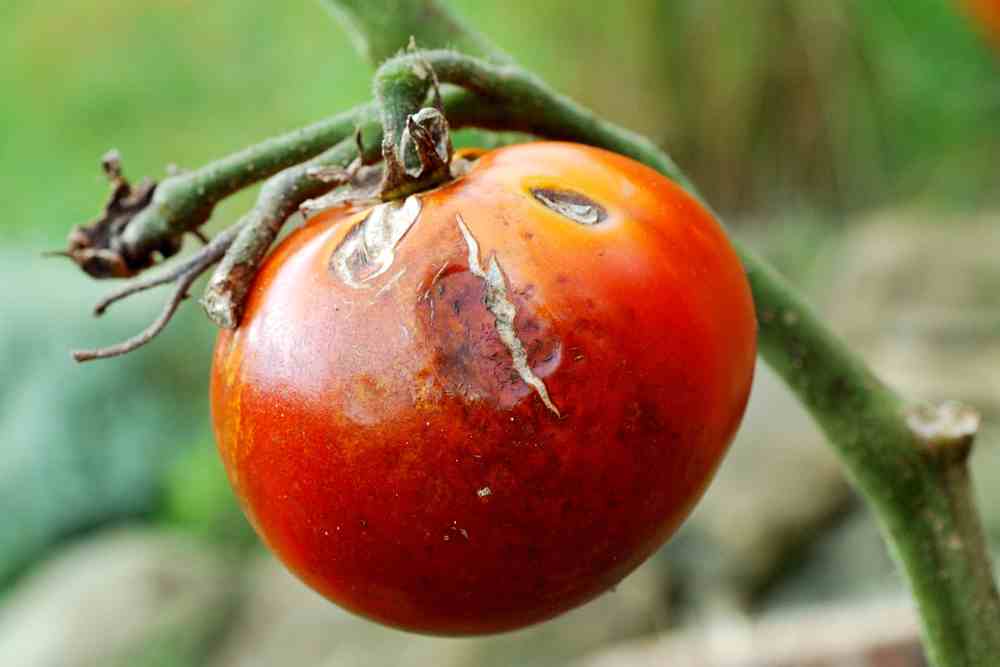
This pathogen is frequently not found until moderate to severe symptoms of wilting start to appear. However, the first signs of this disease are typically water-soaked lesions at the plant’s crown, on or near the soil line. The formation of white mycelia surrounding the diseased plant components to form a mat is a sign of this virus.
This disease will produce several mustard-seed-sized spherical, yellow sclerotia where there is an infection and mycelial growth. When infected fruits come into touch with bare soil, they can develop hyphal mats and sclerotia and destroy the fruit.
Avoid planting in fields that previously experienced the disease as the first step in effective pathogen management. To avoid spreading this pathogen on the field, pathogen exclusion is essential. The possibility of spreading the pathogen onto the field can be decreased by using clean media and ensuring disease-free transplants.
Remove the diseased plants and any surrounding soil as soon as possible, preventing the spread to nearby plants. Pathogen levels can be lowered using soil treatments such as solarization and disinfestation. The management of this disease with deep plows and burying of planting materials has also been demonstrated to be successful.
4. Tomato Yellow Leaf Curl Virus (TYLCV)
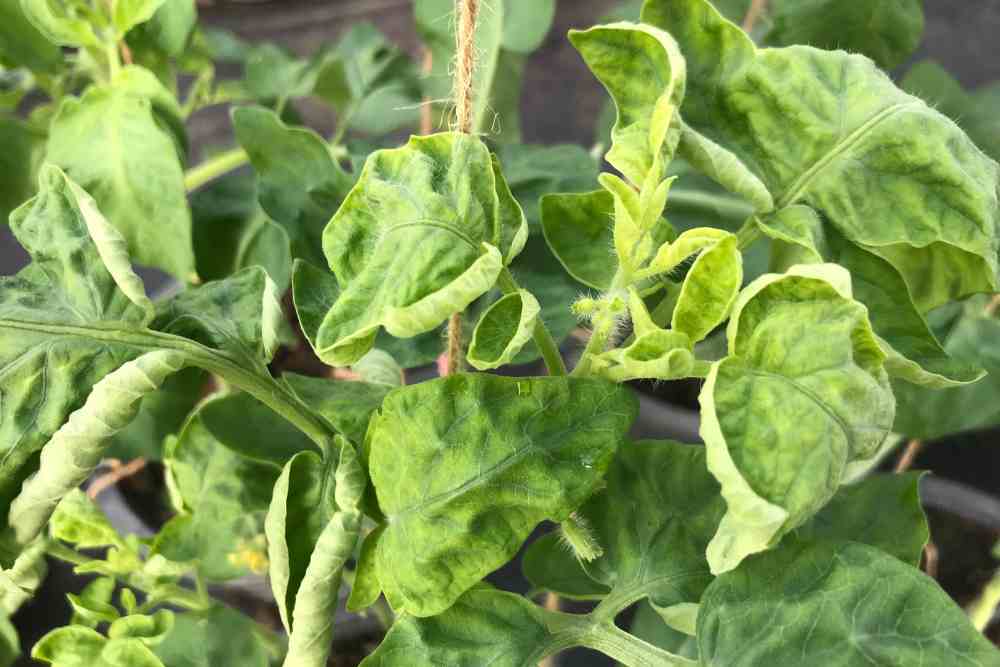
The adult whitefly transmits this infection. The whitefly can pick up the virus numerous times throughout the season and spread it for 10 to 12 days. Marginal yellowing, chlorosis, and leaf cupping are frequently the first symptoms noticed on the newest leaves.
Depending on the age of the plant, other symptoms could include mottling, smaller leaves, stunting, and fruit and leaf drop. One or more symptoms may be detected simultaneously and become more pronounced as the plant ages. Because the symptoms of this disease are evident but not distinctive, a laboratory diagnosis is necessary.
For cultural management, choose TYLCV-resistant cultivars and use transplants that are virus- and whitefly-free. Remove any unhealthy plants. It is essential to manage whiteflies effectively to stop the virus from spreading during the season. Reduce the buildup of whitefly vectors by using appropriate crop rotation practices and a fallow period between harvests.
Immediately remove or eliminate all tomato plants after the growth season. To the greatest extent possible, practice good weed management within and around the structure. Whitefly populations must still be controlled since they can cause uneven fruit ripening even when TYLCV-tolerant types are used. When infected, types that are tolerant to the virus will still show only modest symptoms and can act as a source of the virus.
5. Tobacco Mosaic Virus (TMV) And Tomato Mosaic Virus (TOMV)
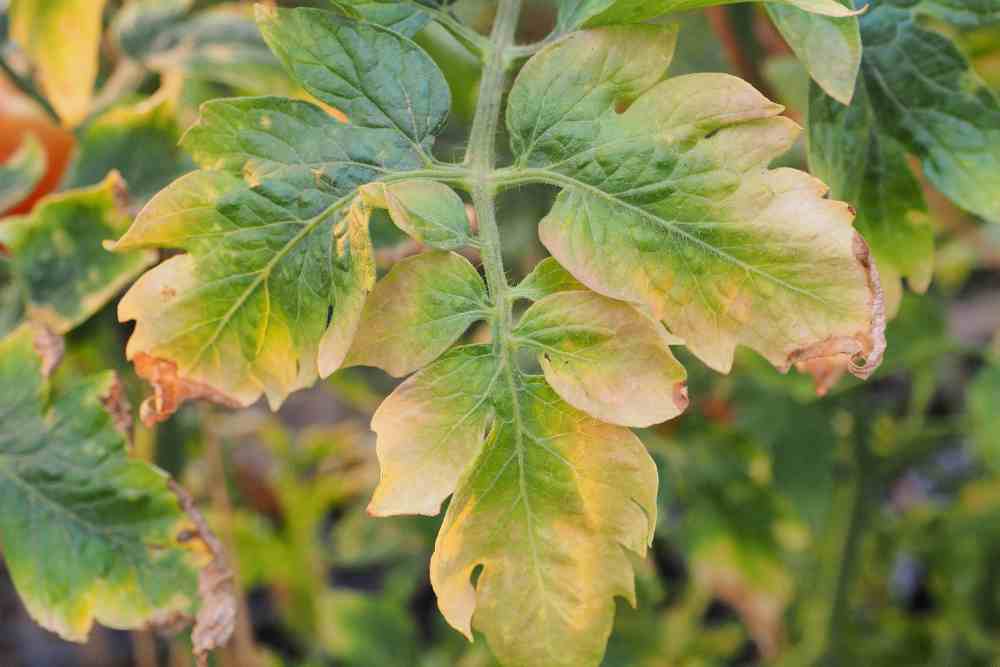
This virus, a seed-borne disease that spreads mechanically, can cause significant losses. Depending on the plant’s age, cultivar, climate, and virus strain, TMV symptoms might vary significantly. Many typical symptoms, however, include mosaic patterns on the leaves that range from light yellow-green to dark green.
There could be a malformation or distortion of the leaves, frequently referred to as “leaf strapping” or a “shoestring-like” appearance. Infection can also result in mosaic or necrotic patterns on the fruit, which can cause interior browning and premature ripening. If this pathogen’s symptoms are advanced, there may be considerable leaf yellowing with green veins.
Use resistant cultivars whenever possible to manage. Avoid touching plants while using tobacco products when pruning, and wash any pruning equipment with soap, 0.06% sodium hypochlorite (bleach) solution, or 2% Virikon S.
Take precautions to prevent staff members and equipment from transferring the virus from infected plants to healthy plants. Infected plants should be dug up and removed from the field if at all possible, to lessen inoculum. Use disease-free or treated seeds whenever possible. Wherever possible, rotate with nonhost crops.
- 15 Ingenious Kitchen Garden Ideas to Cultivate Freshness Right at Home - April 7, 2024
- 10 Top Picks Best Plants for Open Terrarium - April 2, 2024
- 21 Easy and Cheap Walkway Ideas for a Charming Garden - March 31, 2024

